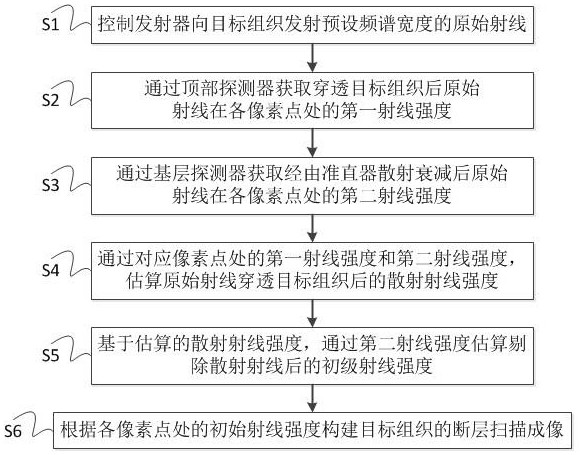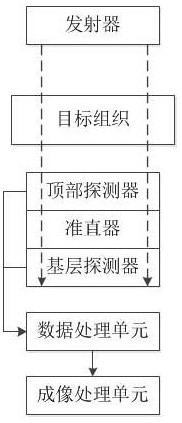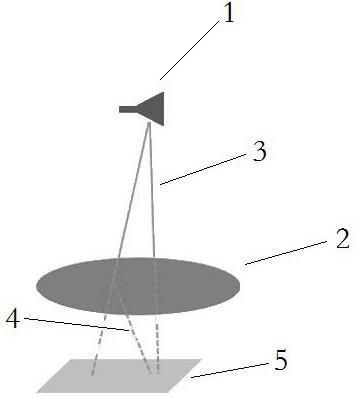Cone beam computed tomography imaging method and system based on scattering recognition
A technology of tomography and imaging methods, which is applied in the field of image processing, can solve problems such as complex signal composition, and achieve the effect of reducing estimation errors
- Summary
- Abstract
- Description
- Claims
- Application Information
AI Technical Summary
Problems solved by technology
Method used
Image
Examples
Embodiment 1
[0047] In traditional CBCT, such as image 3 As shown, there is only one flat panel detector (FPD) as the original ray detector of CBCT. Among them, FPD is a two-dimensional original ray detector, which has position sensitivity after discretization. The raw rays 3 generated by the emitter 1 are transmitted and projected onto the FPD 5, whose ray intensities are recorded as shadows. By repeating the original radiography around the target tissue 2 and recording it at different angles, a cross-sectional image of the target tissue can be reconstructed. However, the original rays generate scattered rays4 in the target tissue, which in turn contaminates the data acquired by FPD. Then use various scattered ray estimation algorithms to estimate the scattered rays, but the estimation in this process can basically only use the polluted data obtained on the FPD.
[0048] Among them, one of the classic algorithms of the scattered ray estimation algorithm is filter convolution, in which...
Embodiment 2
[0103] In order to better understand the technical content of the present invention, this embodiment illustrates the present invention by way of system structure, as figure 2 As shown, a cone-beam computed tomography imaging system based on scatter recognition, including:
[0104] A transmitter for emitting raw rays with a preset frequency spectrum width to target tissue;
[0105] The top detector is used to obtain the first ray intensity of the original ray at each pixel point after penetrating the target tissue;
[0106] The collimator is used to attenuate the scattered rays after the original rays penetrate through the target tissue and the top detector;
[0107] The base detector is used to obtain the second ray intensity at each pixel of the original ray after being scattered and attenuated by the collimator;
[0108] The data processing unit is configured to estimate the scattered ray intensity after the original ray penetrates the target tissue according to the first...
PUM
 Login to view more
Login to view more Abstract
Description
Claims
Application Information
 Login to view more
Login to view more - R&D Engineer
- R&D Manager
- IP Professional
- Industry Leading Data Capabilities
- Powerful AI technology
- Patent DNA Extraction
Browse by: Latest US Patents, China's latest patents, Technical Efficacy Thesaurus, Application Domain, Technology Topic.
© 2024 PatSnap. All rights reserved.Legal|Privacy policy|Modern Slavery Act Transparency Statement|Sitemap



